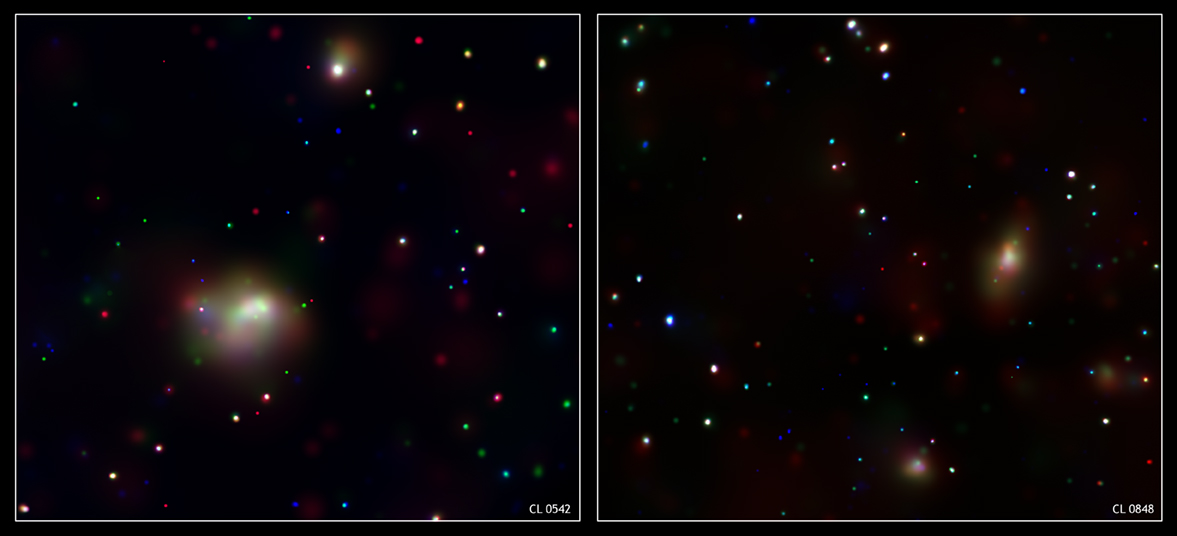
 Credit: NASA/CXC/Ohio State Univ./J.Eastman et al
Credit: NASA/CXC/Ohio State Univ./J.Eastman et al
Growing Trouble
Monster black holes lie at the heart of most (maybe all) galaxies. Like our own Milky Way, for example. But nearby monster black holes (like the one in our Milky way) are rather sedate by cosmic standards, when compared to beasts like the one at the center of the Centaurus A galaxy, which produces enormous outpourings of radiation and huge cosmic jets streaking into the Universe for mega-lightyears. Astronomers had some suspicions about why such supermassive black holes in nearby galaxies are not as frightening as the ones in the distant, early Universe. But now a survey by the Chandra X-ray observatory has helped to confirm these suspicions. Chandra has shown, for the first time, that younger, more distant clusters of galaxies contain more active supermassive black holes than older, more nearby clusters. An example is shown above. These Chandra images show two distant clusters of galaxies, CL 0542-4100 on the left and CL 0848.6+4453 on the right. In these images, red stands for low-energy X-ray photons and blue for high energy X-rays. The images show X-ray emission from hot gas trapped by the cluster but also from individual supermassive black holes at the centers of active galaxies within the cluster. Chandra shows that the more distant galaxy clusters have about 20 times the number of active galaxies found in the nearby clusters. Presumably these higher numbers of active galaxies are due to the greater amount of gas in the younger galaxies which provided a rich nutrient source for the hungry monster black holes.
<
HEA Dictionary ● Archive
● Search HEAPOW
● Other Languages
● HEAPOW on Facebook
● Download all Images
● Education ● HEAD
>
Each week the HEASARC
brings you new, exciting and beautiful images from X-ray and Gamma ray
astronomy. Check back each week and be sure to check out the HEAPOW archive!
Page Author: Dr. Michael F. Corcoran
Last modified Monday, 26-Feb-2024 17:09:45 EST


